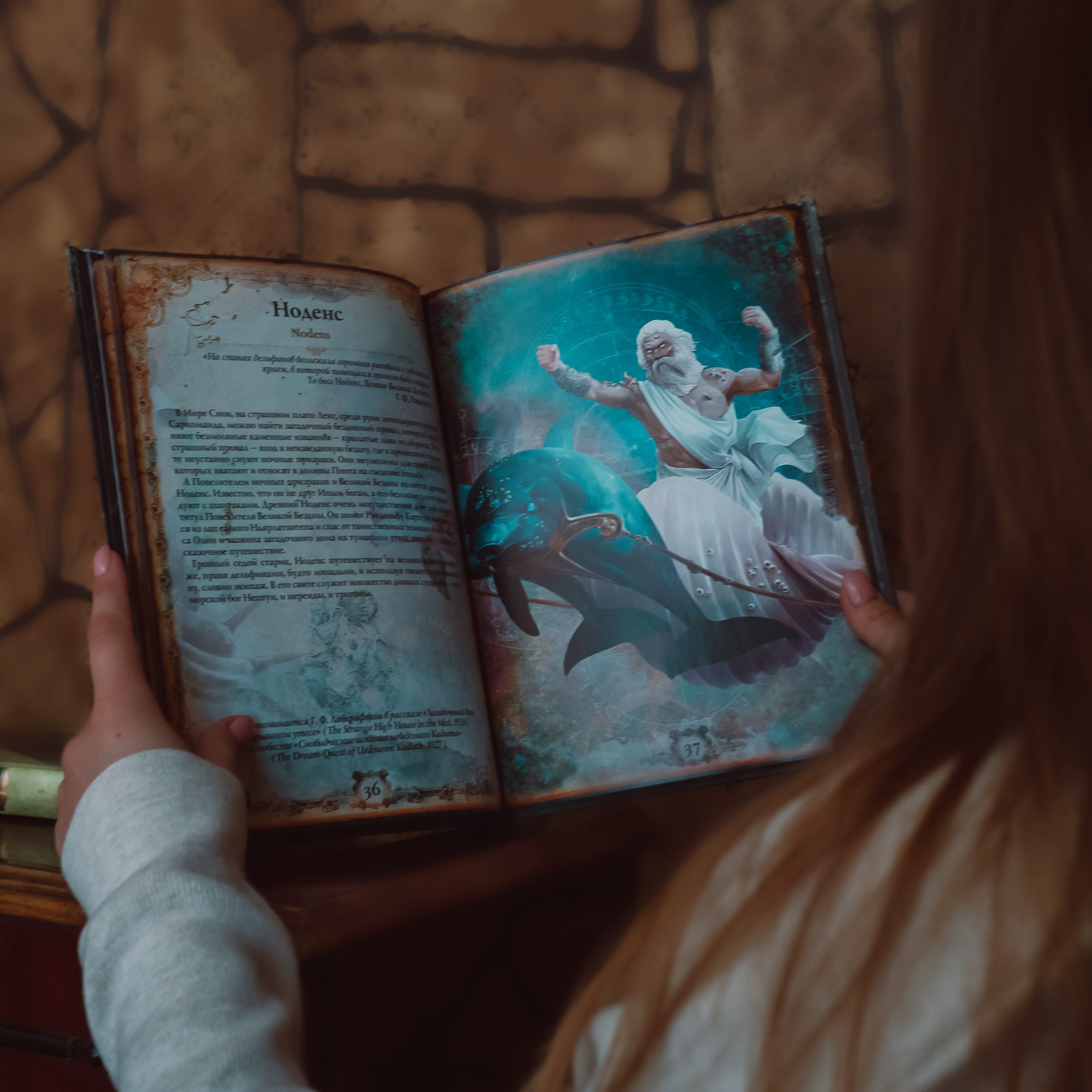Everyone knows it: The same story about that one neighbor that has a dispute with his other neighbor. It gets told totally differently by different people. Perspectives and time frames play an important role. People tend to narrate their point of view in a timeline of the events, because we learned to do so in school. But just like a detective has to collect all pieces of a puzzle to solve a case, the real events and their causes in such a dispute must be evaluated against each other. In a non-linear way – that is to say, without chronological order. Let’s dig into the non-linear concept in this blogpost.
What is the difference?
There’s a major difference between linear and non-linear storytelling: the chronology.
That can be both the case with the traditional novel – that we of course think of when we hear ‘storytelling’ – but also textbooks that include information, as we will see later on. Storytelling, in our eyes, goes beyond just sharing stories such as fairy tales. Instead, it’s the art of how to construct a narrative towards your audience in the best possible way. That can also be a narrative focused on economics, for instance!
Linear narratives follow the chronological order. Simply said, they progress in the same way as time progresses as humans perceive it. Non-linear storytelling, on the other hand, does not follow that order. It can jump back in time and look ahead. Important aspects of such stories are flashbacks and flashforwards, dream sequences and foreshadowing. But non-linear storytelling can also exist without a timeline: parallel to all kinds of pieces of information, that can be put together as one piece of non-linear storytelling.
Some stories incorporate a bit of both linear and non-linear. In Leo Tolstoj’s classic novel Anna Karenina, foreshadowing is a crucial part – even though the storytelling is generally linear. Anna, a married woman part of the nineteenth century Moscow aristocracy, gets hopelessly involved in a love affair. Throughout the story, we see references to trains. Not an unimportant scene, for instance: at the beginning of the story, a railroad worker gets run over and passes away at the station where Anna is deboarding the train. All these ‘hints’ foreshadow the dramatic ending of the book time and time again. Through the way he writes his novels, he frames the information in a specific way. Therefore, Tolstoj is a master of story construction.
Non-linear
Non-linear stories are stories that go in many directions. Many non-linear stories still follow a certain rule of order, however. Let’s take a look at books with flashbacks and flash forwards in certain chapters. The author chose to place these chapters in a specific order. While you technically could, it makes much more sense to read the book one chapter after another as the author planned it for you.
Non-linear storytelling is not just an aspect that is part of novels. It can also relate to other pieces of information, for instance textbooks for schools or scientific papers in general. In fact, a textbook on for instance biology would be much easier to create non-linearly than a novel, if you think about it. They don’t necessarily have to follow a timeline, so you can structure the information just how you like it to be.
There’s also non-linear storytelling that steps away from this completely, such as the kontext maps we make. In this type of storytelling, we don’t have to read from left to right, top to bottom. Instead, we can start wherever and the information will come to us in the same matter.
Such information uses non-linear storytelling in a slightly different way than novels do, next to this. If we take our maps in mind, we see that it leaves the reader the ultimate decision as to where he or she wants to go, while a novel by Tolstoj on the other hand always pushes for a certain direction – the reader simply has to follow along.
In media res
In the Ars Poetica (‘poetic Arts’, 13 B.C.), Roman poet and satirist Horace first mentioned a term we still use to this day when discussing non-linear storytelling: in media res, or ‘into the middle of things’. The opposite of this, linear storytelling, starts ‘from the egg’ according to Horace: ab ovo.
“Nor does he begin the Trojan War from the egg, but always he hurries to the action, and snatches the listener into the middle of things…”
Horace was right: when we consume non-linear stories, they often start in the middle of things – not at the start… or egg, in his words.
Favorites
So now you know what it is, but can you think of examples? Here is some of our favorite non-linear storytelling, mainly in the traditional sense of the word:
- Wuthering Heights (1847): truth be told, this classic Emily Brontë novel can be quite confusing because of the jumps in time with similarly named characters. However, once you get the hang of it, it’s intriguing until the bitter end.
- Atonement (2007): this movie directed by Joe Wright and starring Keira Knightley and James McAvoy, describes a British family drama in the 1930’s. It uses ingenious flashbacks in which we see boths sides of the coin: it shows us how different people experienced the same situation.
- Eternal Sunshine of the Spotless Mind (2004), directed by Michel Gondry, this indie hit starring Kate Winslet and Jim Carrey tells the tale of a man who would love to remove the memories of his relationship with his ex. The medical procedure that he undergoes to do so offers a dream-nightmarish-like setting to jump back and forth in time.
- How I Met Your Mother (2005-2014): not all non-linear storytelling has to be serious! A modern classic, HIMYM makes many people giggle. While technically, the whole show is a big flashback, it makes thousands of jumps in time to tell side-stories.
- Santa Esperanza (2006): this book, written by Aka Morchiladze, contains lots of small books which together form one. However, all of them are finished on their own, and can be combined in any possible way. Therefore, you can also choose to read it in any particular order you wish.
- Cloud Atlas (2012): “An exploration of how the actions of individual lives impact one another in the past, present and future, as one soul is shaped from a killer into a hero, and an act of kindness ripples across centuries to inspire a revolution”, that’s how IMDB describes this drama featuring Tom Hanks, Halle Berry and Hugh Grant. Non-linear storytelling at its best!
- Tenet (2020): One of the many successful Christopher Nolan works, this movie masterfully plays with the concept of time. It features, for instance, bullets with “inverted” entropy – they move backward through time.
An art form
We’re well aware that the above examples are novels. However, as mentioned before, we believe that it’s actually not novels that benefit the most from non-linear storytelling. It’s pieces of content more towards the knowledge spectrum that are the epitome of the technique! Textbooks, for instance, or wider topics that you want to put together – such as our map on 5G technology, for instance. Such information pieces don’t necessarily have to follow a timeline, unlike novels that somehow always need more structuring. Think of the classic drama literature formatting, for instance: either a comedy with a happy ending, or a tragedy with a sad ending.
Non-linear storytelling, whether in the completely free form such as kontext maps or not, is a true art form. Why? They mimic the way the human mind works. Humans do not think in a ‘straight’ way, going from A to B without any sideways. If we were to draw out our thinking process, it would hardly ever be a straight line.
There’s some other reasons why we love non-linear storytelling. On top of the list: the intrigue it can create. While line-by-line texts can be dull and distraction-prone, non-linear stories are like a fascinating puzzle at all times. It requires much more engagement of the audience to put everything together and create their own logic to the story. Although novels might again pop into your mind here, that is also majorly important for content focused on knowledge, if you think about it. With any content, in fact, you would want your reader to keep their ‘head in the game’.
Non-linearity also is very beneficial in knowledge texts in another way that’s harder to achieve for novels. There are tons of possibilities in the online world to experiment with non-linearity in texts. Think of all the different formats you can put it into, and including the multimedia approach with video, audio, graphics and even interactions on social media!
Best of both worlds
Whether you use non-linear storytelling is, of course, all up to you. However, we definitely recommend it – in fact, we can’t think of any topic in which at least a spark of nonlinearity would not be of benefit, be it through jumps in time or by adding for instance a multimedia aspect or an entirely different perspective on the topic. Many times, it’s the best of both worlds that helps you create the best final product.
Sources





